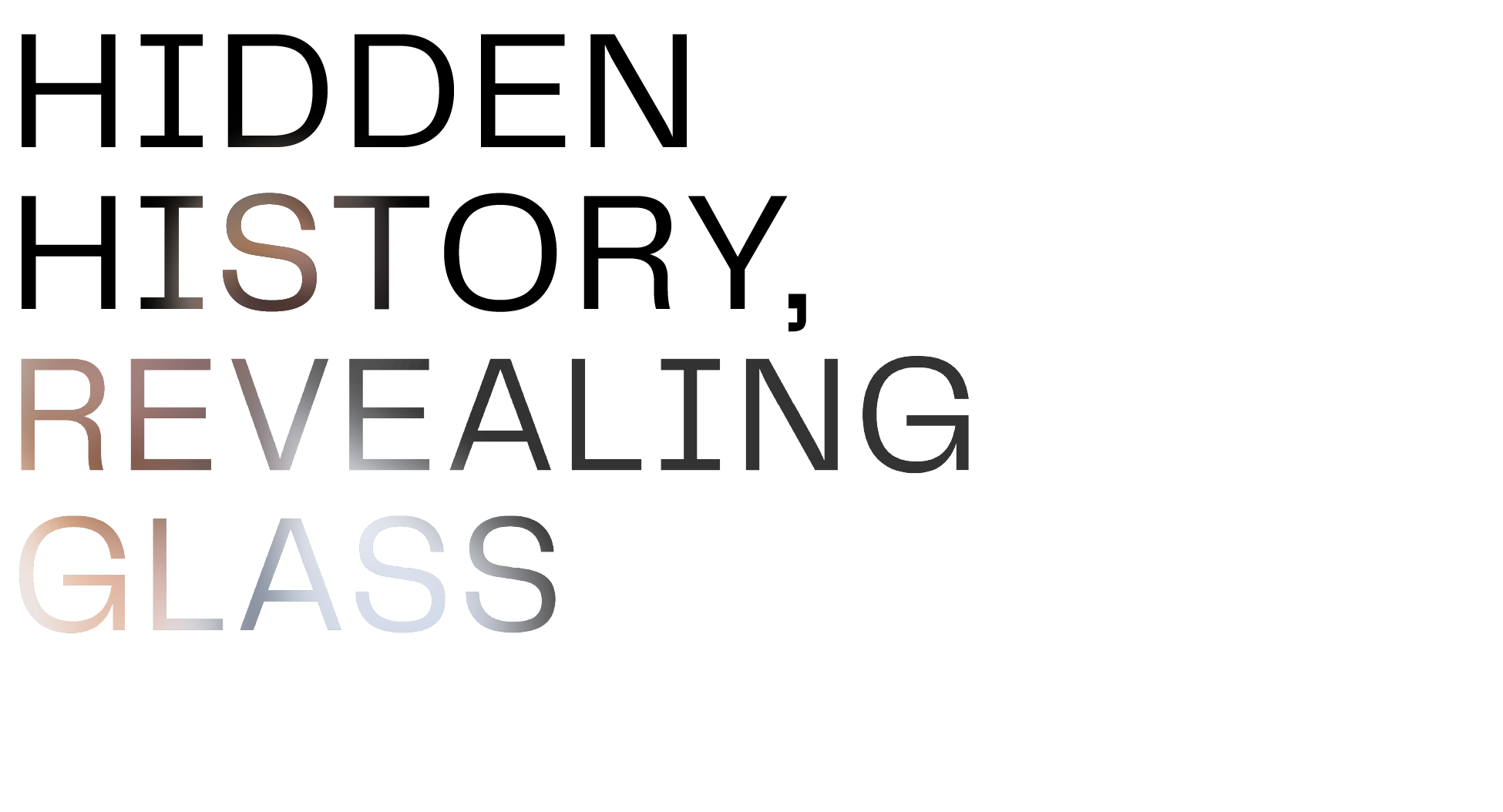Department of Art & Art History Warnock Artist in Residence, Cheryl Derricotte (Photo: University Marketing & Communications)
WRITTEN BY JULIA LYON
Choosing the Marva and John Warnock Artist in Residence out of 50 or so hand-picked artists is never easy. Everyone on the selection committee has their favorites for the invitation-only residency.
“I wanted someone who was out of the box,” recalled Associate Professor of Art History Winston Kyan of the 2023 committee’s search. “There are many artists working on pressing social issues, but there are less artists that address human difference and its impact on society.”
Cheryl Derricotte, with her unconventional career path, rose to the top. A visual artist specializing in glass and paper, the 2024 Warnock Artist in Residence is also a licensed city planner.
“Art is not a private activity for me,” Derricotte said. “Art is part of a public expression.”
One of her most recent pieces blended both of her worlds. Derricotte designed a monument to Harriet Tubman for the new Gateway at Millbrae Station development in California. “Freedom’s Threshold,” unveiled in March 2023, is the first glass sculptural piece ever made in honor of the famous abolitionist and “conductor” of the Underground Railroad.
Her work often peels back layers of American history and highlights people whose stories have not been told before.
“I believe the museum and the gallery are the brave places to host difficult dialogues in our society,” Derricotte said during the Warnock artist talk in January at the Utah Museum of Fine Arts. “I believe art is the vehicle that can get us there.”
She first experimented with glass 21 years ago during a class at the Washington Glass School. Derricotte created a small house titled “Shed Some Light” that included the words “2.3 billion people live without electricity.” The positive reception to the piece led to her studying at the Penland School of Craft in North Carolina where she’s returned several times over the past two decades.
“Glass is not an easy medium,” Derricotte said. "I was inspired by the challenge of it. I really found my voice in sculptural glass.”
She eventually received an MFA at the California Institute of Integral Studies. Growing recognition of her groundbreaking work led to a 2016 solo exhibition Ghosts/Ships at the Museum of the African Diaspora in San Francisco. The show included historic photographs of enslaved people rendered in glass and images of slave ships printed in white ink on dark blue paper. A video diary with a haunting ocean soundtrack completed her installation.
Associate Professor Edward Bateman, the head of the Photography and Digital Imaging area, knew that being in Derricotte’s master class would be an experience U students would never forget.
“It was going to be an opportunity to work long-term with an artist with a growing reputation that brings a new set of perspectives to their own practice,” said Bateman, who was chair of the Warnock selection committee. “And maybe affect how they see their own life trajectory.”

“It was going to be an opportunity to work long-term with an artist with a growing reputation that brings a new set of perspectives to their own practice,” said Bateman, who was chair of the Warnock selection committee. “And maybe affect how they see their own life trajectory.”
As the Professional Development Officer of the new Arts & Planning Division of the American Planning Association, Derricotte has a deep understanding of the importance of public art.
The students in Derricotte’s master class, “The Construction of Memory: Monuments and Utopias,” considered utopias at a moment when many Americans feel the country is fractured. They discussed the history of American monuments — who do they represent? what story do they tell? — and mined their personal memories to see how those may impact their art.
“My own practice is very outward focused on humanity and people around me, but our first projects have been inward focused, which has been very enriching,” said Pamela Beach, an MFA student in painting and drawing, and a member of Derricotte’s class. “When you get different perspectives from people — the way they work and why they work or why they create — it can cause you to question why you’re creating what you’re creating.”
One of the goals of the Warnock residency is “to expose students to new, innovative, and diverse contemporary art practices.”
“There are many ways in which having that kind of wonderful, endowed gift gives a department even more flexibility to bring in creative scholars to meet the urgent moment,” Derricotte said.
Warnock Artist in Residence, Cheryl Derricotte working with students in her semester-long master class (Photo: University Marketing & Communications)
For Ashley Bautista, an undergraduate working toward a BFA with an emphasis in photography, studying with Derricotte allowed her to learn from an artist outside the university and outside the state.
“And it’s my only opportunity to take a course from a person of color,” said Bautista whose parents are from Mexico.
“Picturing James” is a 2022 piece consisting of a black glass skillet and a kitchen inventory handwritten by James Hemings, which is translated into glass. Hemings was enslaved to Thomas Jefferson for much of his life and traveled with the future president to Paris where he learned the art of French cooking. A testament to his skills, Hemings rose to the rank of Chef de Cuisine, and yet no pictures of him exist.
“She is talking about people who lived in the quarters…but then she’s bringing them into the museum and putting them onto the mantel,” Kyan said. “You do not hang your cast iron pot on the mantel, but you would if it’s now a portrait.”
History continues to shape who we are, said Derricotte, whose mother’s maiden name was Jefferson and whose maternal ancestors lived only a few hours from Monticello, Jefferson’s home and plantation.
“Nations can’t outrun their genes,” she said. “It was particularly important for me to tell these stories over the past few years, as younger people were trying to understand how we had a major race riot in Charlottesville in 2017 and a woman was killed.”
During her time in Utah, Derricotte conducted creative research on the bison. She had proposed the topic after learning that Utah has some of the biggest herds of bison in the nation and that Black soldiers, known as “the Buffalo Soldiers” arrived in Utah only a few years after bison were brought to Antelope Island.
“What is it that we need to know about the late 1890s in Utah with this interface of culture?” she asked. “How indigenous cultures are still functioning in that window, how white culture was functioning and settling the West and Black soldiers were brought here in the midst of this challenging time? Something will take shape in terms of a narrative from 1893 to the early 1900s to form the basis of interesting artworks.”
Though some of Derricotte’s work has been large in size such as the 12-foot-tall Harriet Tubman monument, much of it has not. For Kyan, that does not diminish the power of her artistry.
“Cheryl’s work may be small in scale but it’s still monumental,” he said. “Because it deals with major issues the way that a 12-foot statue does.” ▪





